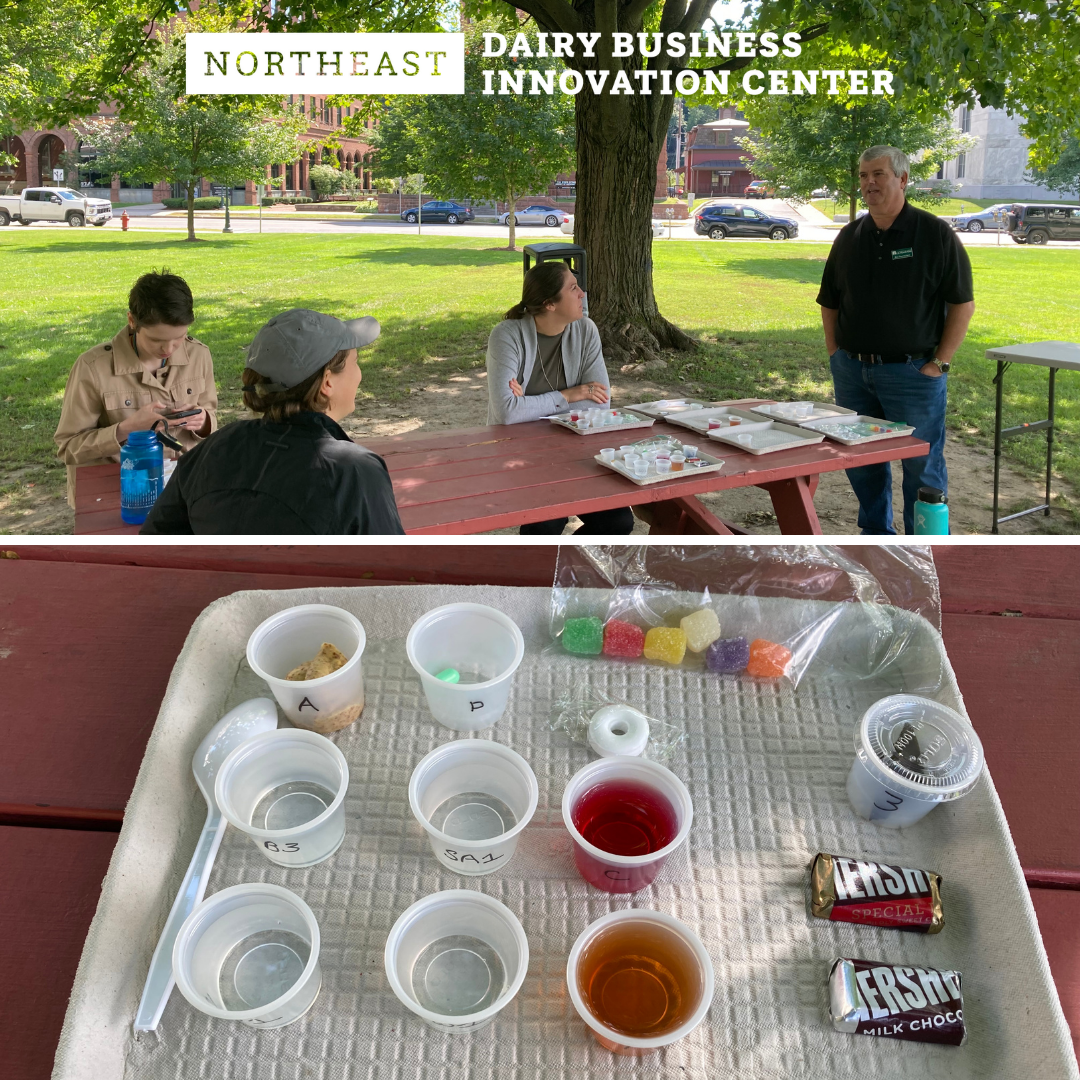
NE-DBIC staff participate in a sensory training led by Roy Desrochers.
By Roy Desrochers, Heather Darby, and Sara Ziegler – University of Vermont Extension
“Please pass the cheese?” Sure! But which one? Do you like the sweet buttery version or the stinky strong one? It’s a critical question to answer for local farmers and cheese producers. Simply put, consumers purchase cheese that tastes good to them, but knowing which flavors and aromas consumers prefer is just the beginning. Farmers and cheese producers must also know how to produce cheeses with these desirable characteristics. What factors affect the flavor of cheese, and in what way? Is it the quality of the milk used, the feed that the cows eat, or perhaps the way the cheese is made? The Northeast Dairy Business Innovation Center (NE-DBIC) hosted by the Vermont Agency of Agriculture, Food & Markets has teamed up with the University of Vermont Extension to begin to answer such questions.
Earlier this year, UVM Extension kicked off a NE-DBIC funded project to use a sensory directed product development approach to connect the dots between the farm, cheese production, and final cheese products that meet consumer preferences.
The first task was to train a team of UVM staff in an objective, descriptive tasting method called Flavor Profile Method. The training was led by Roy Desrochers, a global sensory expert with UVM Extension. This method is the first descriptive sensory method in the world and has successfully been used to benchmark product flavor, understand consumer preferences, and identify key variables responsible for the sensory quality of food products in the marketplace. This method can be applied to any food product or beverage from ice cream to beer.
Next, the trained sensory panel evaluated a wide range of cheeses purchased in the local market, as well as cheeses provided by two farms who are participating in the study, Jasper Hill Farm (Greensboro, VT) and Spring Brook Farm (Reading, VT). The result was the generation of categories of objective descriptive words to effectively describe the aroma and flavor of cheese. These categories were then used to develop an objective aroma and flavor scoresheet that the sensory panel will use to assess samples later this year and next year.
Currently, UVM Extension is working with Jasper Hill Farm and Spring Brook Farm to supply the core cheeses for the study. The core cheeses will be Alpine style and includes Harbison, Whitney, Alpha Tolman, Reading, Ashbrook, and Tarentaise. Since these types of cheese require different maturation times to reach peak sensory quality, from 70 days up to 10 months, their production dates will be staggered from Oct. 2021 into January of 2022.
Once the artisan cheeses have matured, the first set in March 2022 and another set in August 2022, they will undergo a series of tests including:
- Descriptive sensory analysis by the UVM Extension Sensory Panel to objectively benchmark aroma, flavor, and texture
- Innovative consumer testing to establish customer overall liking and flavors of interest
- Beneficial fat analysis by UVM to understand nutritional value
- Sensory Directed Chemical Analysis (SDCA) by Tufts University to identify aroma and flavor compounds of interest
- Microbial analysis by Tufts University to link aroma and flavor characteristics to the organisms that produce them
By the conclusion of the project, we will be able link the data together to gain an in-depth understanding of the sensory quality of artisan cheese and which management and production factors most heavily influence it. So the next time you ask, “Please pass the cheese?”, we will know exactly which one to pass, and everyone in the artisan cheese value chain, from farmers and cheese producers to retailers and consumers, will benefit.
